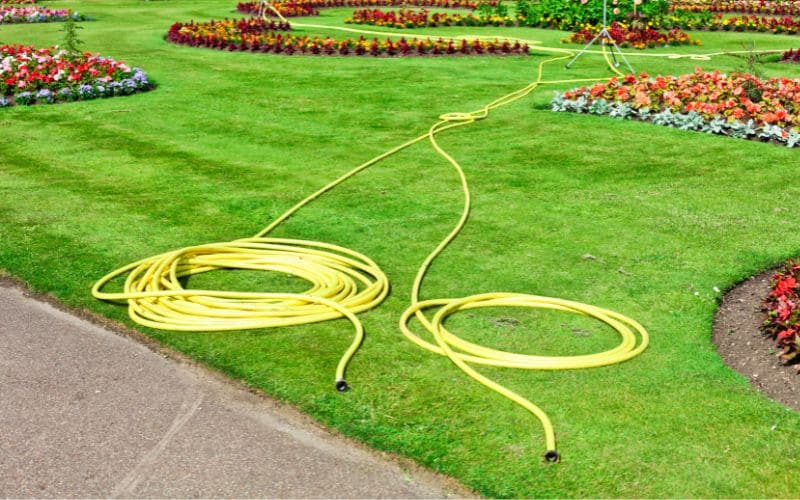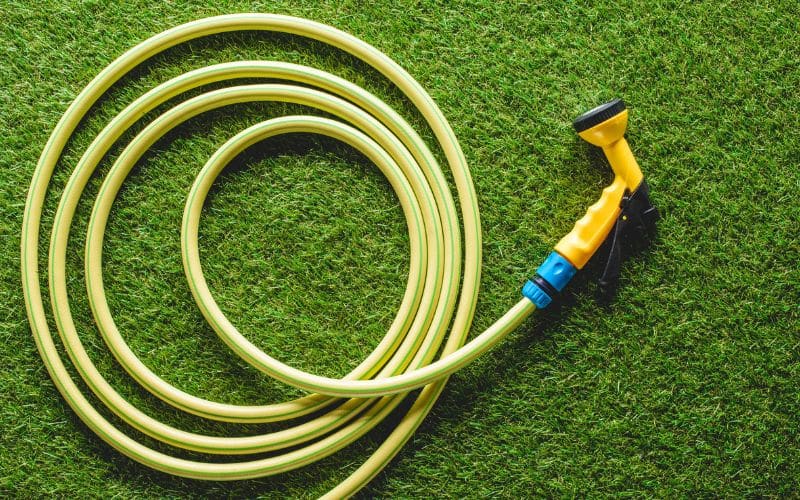
In the realm of Canadian lawn maintenance, the humble garden hose plays a pivotal role. Its length, often overlooked, can significantly impact the health of your garden and the efficiency of your gardening routine. A hose that’s too short may leave parts of your garden parched, while one that’s too long can be cumbersome to use and store, especially during the harsh Canadian winters.
The Importance of Garden Hose Length
The length of your garden hose can significantly impact your gardening efficiency. If your hose is too short, you may struggle to reach all areas of your garden, leading to dry patches and uneven watering. On the other hand, a hose that’s too long can be cumbersome to use and difficult to store, especially during our harsh Canadian winters.
Furthermore, the length of your hose can affect the water pressure. A longer hose may result in decreased water pressure, which can be problematic when you need a strong flow for tasks like cleaning patios or filling large water features. Conversely, a shorter hose will maintain a higher water pressure, but may not reach the furthest corners of your garden.
In addition, the length of your garden hose can also influence its durability and lifespan. Longer hoses are often subjected to more wear and tear, as they are dragged across the garden and potentially snagged on corners or sharp objects. This can lead to leaks and damage over time, requiring more frequent replacements compared to shorter hoses.
Lastly, the length of your hose can impact its storage and maintenance. Longer hoses require more storage space and can be more challenging to wind up and store neatly. During the winter months, it’s crucial to properly drain and store your hose to prevent freezing and damage, which can be more time-consuming with a longer hose.
How to Determine the Right Length
To determine the ideal length for your garden hose, measure the distance from your water source to the furthest point in your garden. This will give you a good idea of the minimum length you need. For smaller gardens or patio spaces, a hose length of 25-50 feet should be sufficient. However, if your garden is way in the back of your yard, you may need to buy more than one hose and connect them to reach the garden.
Understanding Hose Diameter
In addition to length, the diameter of your garden hose also plays a crucial role. The most commonly used diameter for residential gardening in Canada is 5/8 inches. This size offers a good balance between water flow and maneuverability. Garden hoses also come in ½ and ¾-inch diameters, which are often used for lighter tasks or watering smaller gardens. The diameter of the hose controls how quickly water flows through it. On average, a ½ inch diameter hose disperses 9 gallons of water per minute, while 5/8 inch diameter hoses disperse 15 gallons of water per minute, and ¾ inch hoses can disperse up to 25 gallons of water per minute. In addition to this, the length of the hose also affects water flow and pressure. The longer the hose, the less water pressure you will have.
Choosing the Right Hose for Your Canadian Environment
Your garden’s environment should also influence your choice of hose. For instance, a larger garden requires longer and wider hoses for adequate water flow. Gardens with lots of trees, shrubs, or flower beds may need a flexible hose to navigate around the greenery efficiently. If your garden has limited storage space, an expandable hose can be a great option, as it shrinks to a fraction of its size when not in use.

Hose Material and Durability
Garden hoses are typically constructed from one of three materials: vinyl, rubber, or a combination of both. Each material has its own set of advantages and disadvantages that can greatly affect the hose’s performance and lifespan.
Vinyl hoses are the most lightweight and economical option, making them an excellent choice for light-duty watering tasks. However, they are not as durable as their rubber counterparts and are more prone to kinking, cracking, and UV damage.
Rubber hoses, on the other hand, are more robust and durable. They are resistant to kinking and can withstand harsh weather conditions and rough handling. While they are heavier and more expensive than vinyl hoses, their longevity and superior performance often justify the higher cost.
There are also hoses that combine both vinyl and rubber materials, aiming to strike a balance between weight, durability, and cost. These hoses often have a rubber core for durability and a vinyl outer layer to reduce weight.
Some hoses are reinforced with a mesh or helix of metal or plastic to resist kinking and crushing. These reinforcements can significantly enhance the hose’s durability and lifespan.
The color of the hose can also affect its performance. Dark-colored hoses, such as black ones, can absorb sunlight and heat up the water within, which could potentially harm plants if not monitored. Light-colored or reflective hoses, like green or silver ones, are better at staying cool in the sun.
Conclusion
Choosing the right garden hose is more than just picking one off the shelf. By understanding the importance of hose length and how it impacts your gardening, you can make an informed decision that will make your gardening tasks easier and more efficient. Remember, the right tools make all the difference, and a garden hose is no exception.
Colin Macmillan is a seasoned entrepreneur and the CEO of Riverwood Landscape, a leading landscaping company based in Canada. He has been at the helm of the company since leaving high school, demonstrating his strong leadership skills and business acumen.
Colin’s expertise lies in various aspects of landscaping, including lawn care, interlocking, sod installation, and commercial maintenance. His hands-on approach and dedication to the craft have been instrumental in building Riverwood Landscape into a reputable brand.
One of his most notable achievements is the creation of a successful landscape franchise that services multiple locations. This accomplishment underscores his strategic thinking and ability to scale operations effectively.
Colin has also had the privilege of working with Guelph Hospital for landscaping and maintenance, a testament to the trust and reliability that his company has earned over the years.
His professional mission is to offer the best services and experiences for customers, a goal that he tirelessly pursues. Colin’s commitment to excellence and customer satisfaction continues to drive the growth and success of Riverwood Landscape.








